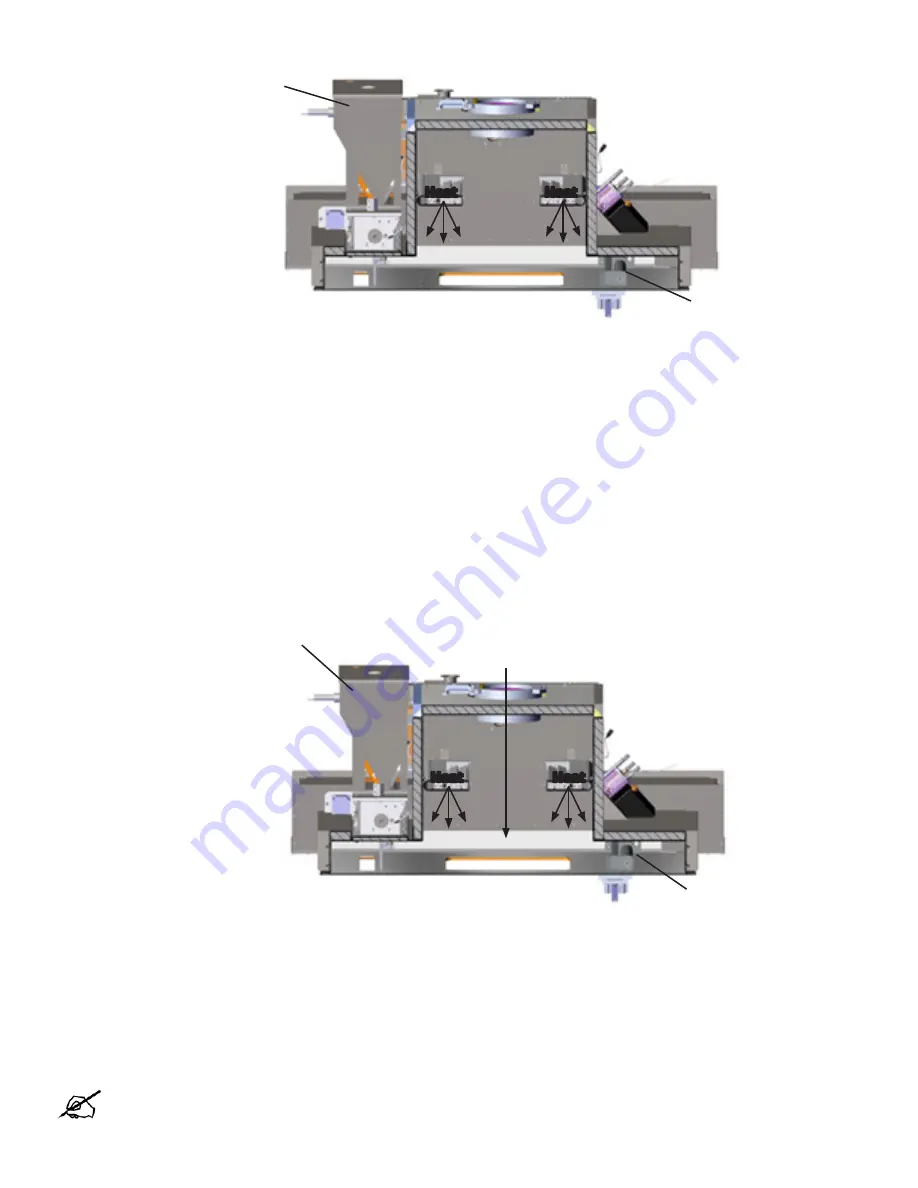
3
3D SYSTEMS, INC
.
Feed Hopper Heater
Roller
Heat
Heat
Warm-Up Stage
•
The warm-up stage stabilizes the temperature in the print chamber, print bed, and feed hopper.
•
This stage lasts approximately 60 minutes, during which the print bed piston indexes down in small increments (0.102 mm
(0.004 inches)) while the roller delivers material. During the warmup stage the part piston will index down approximately
13mm (0.51 inches)
•
During this stage, the system gradually increases the print bed temperature to the necessary point (below the material’s
melting point).
•
In the feed hopper, the material is gradually increased to the highest possible temperature at which the material still flows
freely. This limits the amount of thermal shock (cooling) caused by the feed material when it is first delivered to the print
bed.
•
During the final 5mm of the warmup and during the entire Print (build) stage, the SLS 380 uses the IR camera to adjust the
output of the 8 individual print bed heaters to maintain a uniform temperature across the part bed.
Print Stage
•
The print stage maintains the print bed and feed hopper temperatures.
•
Laser energy is used to melt the material in each successive cross-section of the print.
As the Print Continues
•
The print bed piston indexes down, the parts are covered and begin to slowly cool.
•
The mass and geometry of the parts influence the cooling rate. If the cooling rate is too high, the parts can develop post-
print curl or warp. If the cooling rate is too low, growth can occur.
•
The part positioning in the print also influences the cooling rate. The first parts printed have the highest cooling rate.
First-order phase changes, such as solidification, occur isothermally; the top of these parts will not cool until the entire part
has solidified. This slows the cooling rate of parts subsequently built.
NOTE: To help slow the cooling rate, the SLS 380 uses a piston heater and cylinder heater .
Feed Hopper Heater
Roller
Heat
Heat
Front cut-view of print chamber during the warm-up stage







































